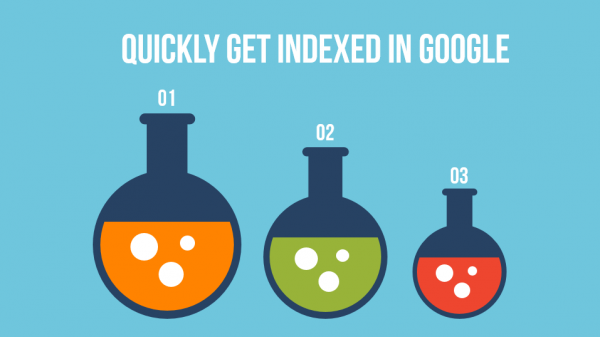13 Ways to Reduce Bounce Rate and Increase Your Conversions
If you’ve been struggling to increase search traffic to your site, improve email signups, get more leads and acquire more clients, it’s possible that your bounce rate is too high.
In other words, visitors and customers who visit your landing page bounce off, before they even give you a chance to convert them.
One way to increase your conversion rate is by having more landing pages. A 2013 study, conducted by HubSpot and shared by Ion Interactive, revealed that companies with 40 or more landing pages get 12 times more leads than those with 5 or fewer landing pages.
According to Navneet Kaushal, when you begin to see a high bounce rate on your landing pages, it’s a signal that your site and content marketing strategy need a serious redesign.
Reducing your bounce rate helps to boost your conversion rate. Once you understand that conversion architecture, you can develop a clear content strategy that will grow your business.
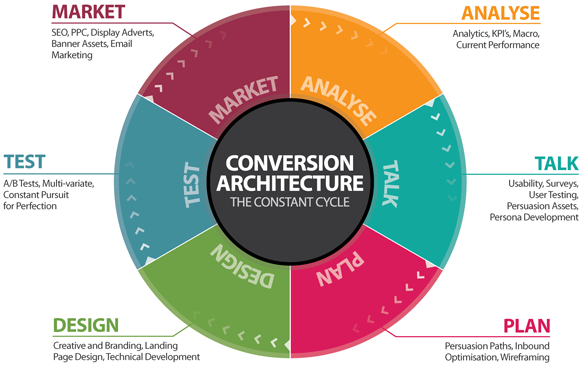
I’ll break down the specifics for you, in this in-depth article. I’ll also show you what smart marketers are doing to boost their conversion rates and build successful sites that generate search traffic on a consistent basis.
Download this cheat sheet to reduce bounce rate and increase your conversions.
What Is Bounce Rate?
When you’re working hard to increase your site’s search performance, one of the things that you should do is to reduce a high bounce rate. In other words, a high bounce rate is a symptom that something is wrong in your strategy – you’re not attracting the right people to your pages.
So, what exactly is bounce rate? Check out the explanation below:

When a user (e.g., customer, prospect, or reader) visits your site on any page (known as an entrance page) and leaves without visiting other pages on the same domain, that’s a bounce. Your bounce rate is the percentage of all users who enter and exit on the same page, without any clicks to other pages on your site.
Listed below are 13 proven ways to reduce bounce rate and improve conversions for your blog:
1. Improve Your Content’s Readability
One reason that your target customers might leave your site is a lack of readability. User experience begins when your content is readable and legible. Specifically, large chunks of text scare readers away, so avoid them.

I’ve also been seeing lots of company blogs with great content and lousy formatting.
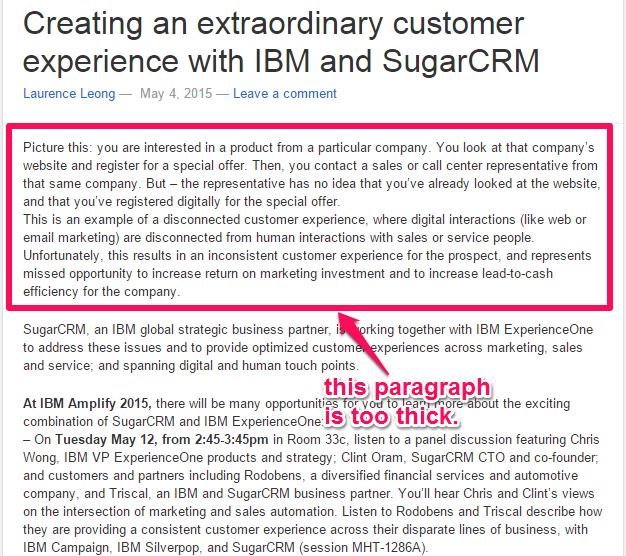
Consequently, customers don’t even get to the merits of the content.
If you look at a few of my posts, you’ll see how I lay out my posts in an easy-to-read format.

Even when I’m explaining technical SEO practices, I still break up the post and write like I speak.
First, the headline – big and bold. Then, I use subheadings and bullet points to make the article easier to read.

Here are a few tips to help you format your content and make it more readable:
- Use subheadings to throw more light on your topic.
- Use bullet points to explain benefits or points worth noting.
- Use plenty of charts, images, screenshots and quotes from industry experts, where appropriate herunterladen.
- Bold keywords a few times (don’t overdo this).
- Ask a lot of questions in your content, to give readers an invitation to participate, instead of just read.
- End your content with a subheading entitled “conclusion.” This tells the reader to quickly read the last few words and take action. Make your conclusion actionable.
You can test how readable your site is at www.read-able.com.
2. Avoid Popups – Don’t Disrupt the UX
In 2013, 70% of users said that they found irrelevant popups to be annoying. That probably hasn’t changed – most people still hate popups. Among site owners and marketers, it’s an intensely debated topic: whether to use popups or to avoid them.

I don’t use popups, because they annoy users. I know that when I visit a site and a popup disrupts my reading, I may decide to leave. Some marketers even use aggressive or even bullying language in their popups, which only makes my immediate departure more likely. I suspect I’m not alone.

On the other hand, popups work. There’s no denying the fact that they can grow your email list quickly.
If that’s the way you want to go, fine. But, if you want to build a long-term site that generates lots of organic visitors, consider limiting or totally avoiding popups. Or, at a minimum, make them as unobtrusive and un-annoying as possible.
According to statistics, only 14% of consumers will consider responding to a popup ad, compared to 51% who respond positively to email offers.

Some popups are well designed and they will convert visitors into long-term readers, which is part of improving conversion rates. But, when we’re talking about search engine traffic and what makes search users excited, it’s a great user experience.
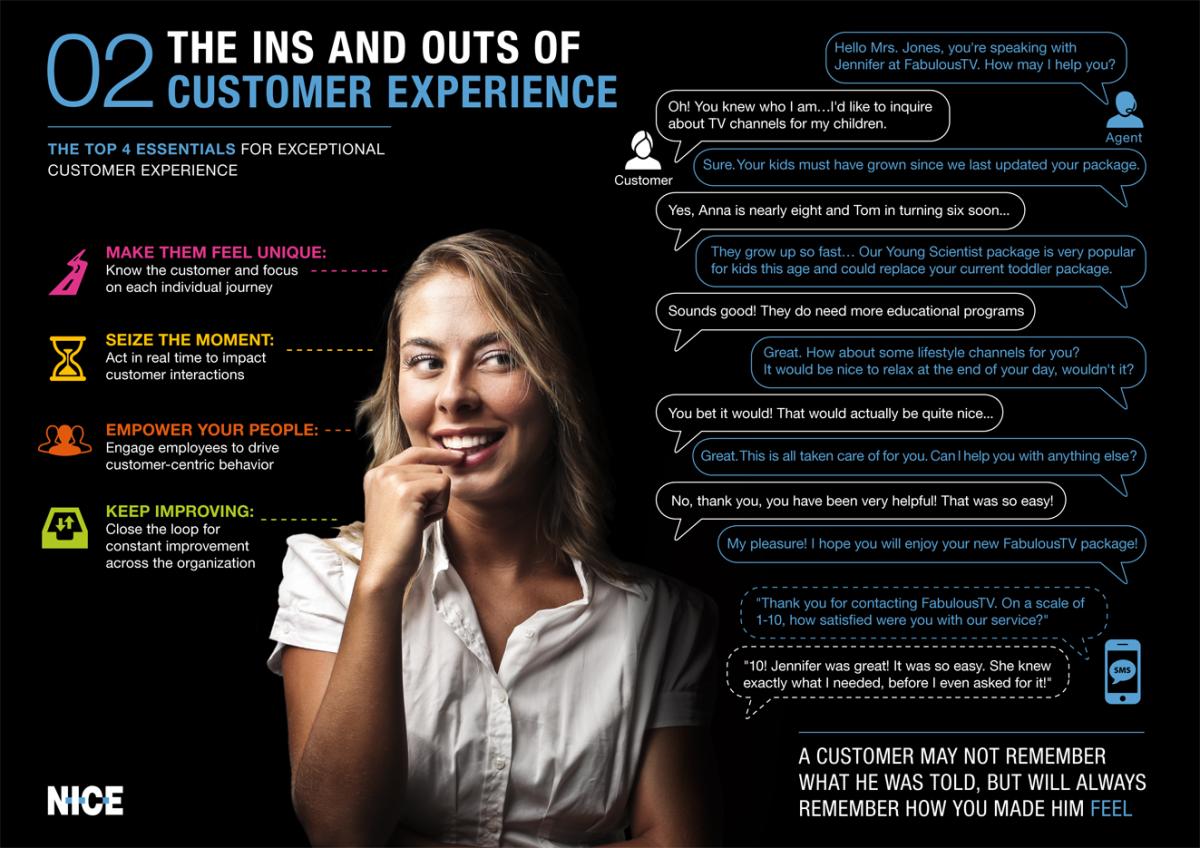
3. Create a Compelling Call-to-Action
According to Go-Globe, “47% of websites have a clear call-to-action button that takes users 3 seconds or less to see.” Is your site one of them?
After you’ve attracted visitors with your headline and built interest with the content, don’t lose them with a weak CTA.

A study by SmallBizTrends found that 70% of small business B2B websites lack any call-to-action. That’s why they have a high bounce rate and a low conversion rate.

Whatever you do, make sure that your CTA is compelling. It should compel users to click and see what’s on the other side.
When optimizing the CTA, every element matters. Even something as seemingly small as changing the text on a button can make a huge difference. Specifically, it can engage users and lead them to a resource page on your site, thus reducing bounce rate.
For example, one Danish e-commerce site that sells car care products increased their sales conversions to 17.18%, just by adding a text CTA with a link to product pages.
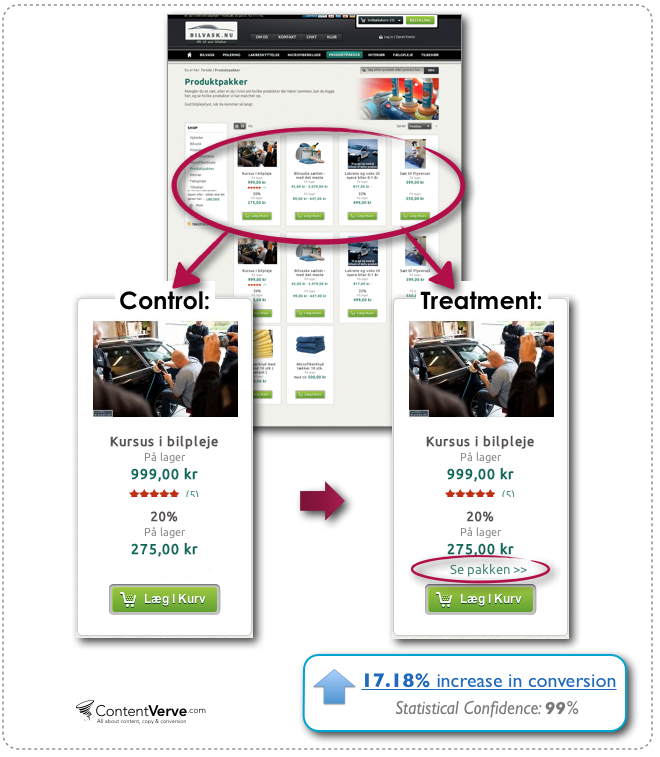
Sprout Social, a social media management software business, understands that giving users a free trial period and educating them along the way is a surefire way to convert more users into customers herzeln herunterladen.
If you’re in the SaaS business, offering free trials truly works. Your free trial should be made plain in your CTA.

Remember that great calls-to-action will improve usability. When that happens, your ideal customers will gladly stay on your site. Every second spent on your site, due to an enhanced CTA, will improve your conversion rate and lower your bounce rate.
4. Improve Your Brand Storytelling
Storytelling will captivate the minds of your target audience members. But, you have to use it well. Remember that your customers are wired to remember and respond to good stories.
According to Adam Toren of Forbes, storytelling can bring your brand to life.
You’ve got to recognize how people read content. They’re mostly scanning a page, looking for something that stands out. It could be a subheading, a word, a term or an image. Storytelling can connect those eye-catching elements with the rest of your content.
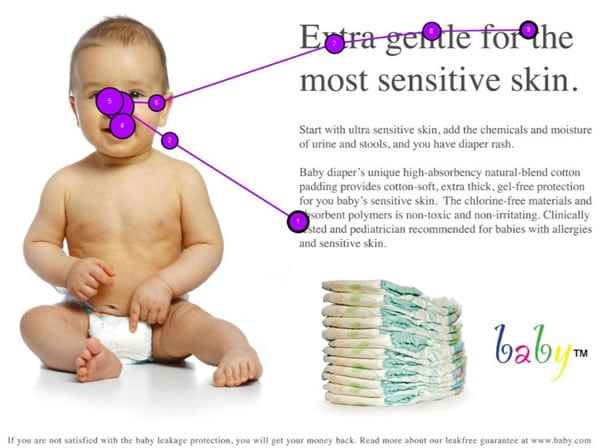
Of course, you need clarity in your content. But, storytelling helps your content appeal to users in a dynamic, emotional way. As a result, they’ll begin to trust you more.
So, how should you incorporate storytelling into your content, if your goal is to build a loyal audience that will read your content, respond to your offers and take part in your adventures?
i). Make customers the hero: Ann Handley said that if you want your story to be memorable and truly lead to business growth, then “make the customer the hero of the story.” It boils down to putting customers first and providing high quality content that they’ll find beneficial to share. And, sharing demonstrates a level of trust.
Copyblogger tells good stories. In fact, Brian Clark built Copyblogger Media by telling great marketing stories and creating an enormous amount of high-quality content.

Today, the company has grown into a $7 million digital company. Their project, Rainmaker.fm, a digital marketing podcast, is also thriving, due to good storytelling. In all, they’re putting the target audience first – and making their customers the heroes of their stories. And, who doesn’t want to be seen as a hero?
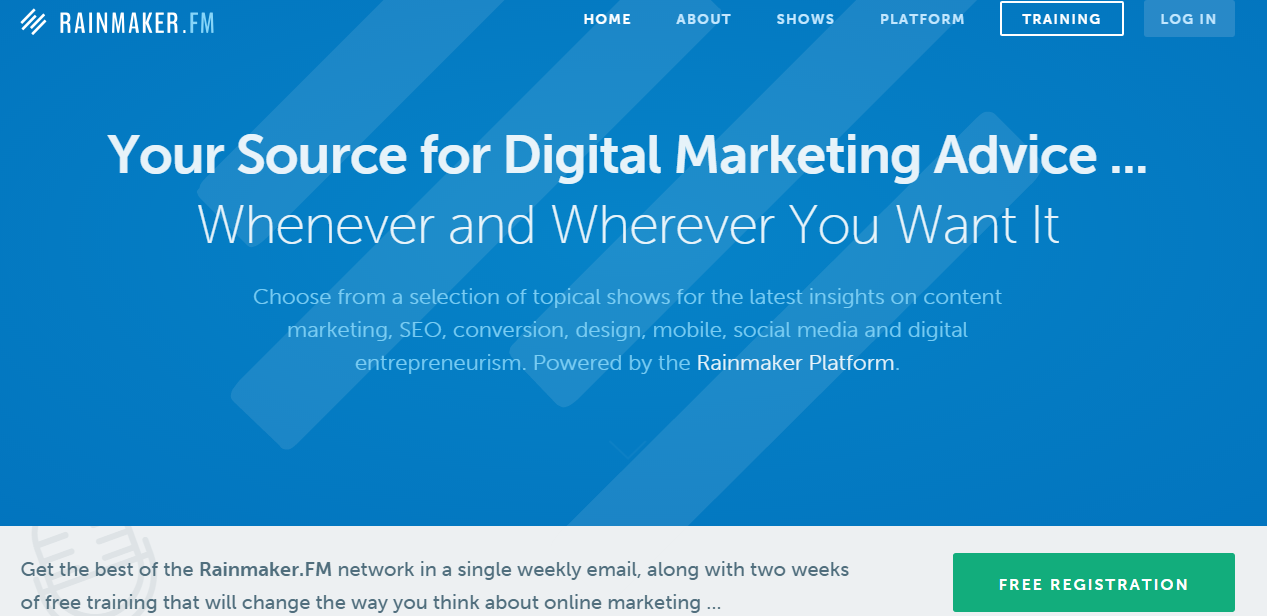
ii). Be truthful: Great storytelling is born from a passionate belief in truth.
For example, if you believe in helping customers find the right content online in your industry, then don’t shrink away from sharing your story of failure. Remember that the story of failure is often the story that your target audience most wants to hear.
You’ve got to put yourself in their shoes and see things from their perspective. Whatever you do, don’t lie to them, even with the best of intentions. It’ll hurt both your credibility and your readers. They will leave, when they suspect you’re not being upfront.
In storytelling, you’ve got to avoid anything that might jeopardize your credibility. So, be honest in your storytelling. Just think about Jon Morrow, who shared a sad story of how he was hospitalized for months, lost his job and went broke.

A few years later, he’s built one of the best content marketing blogs around and earns over $500,000 annually. Jon was brutally honest and didn’t care what people would say or think. He valued transparency more than anything else.
Another example is Marcus Sheridan. He was a broke “pool guy.” But, by sharing his story and really listening to his customers, he embraced content marketing and turned his River Pools and Spas business into a successful multi-million dollar company mikrofon app herunterladen.
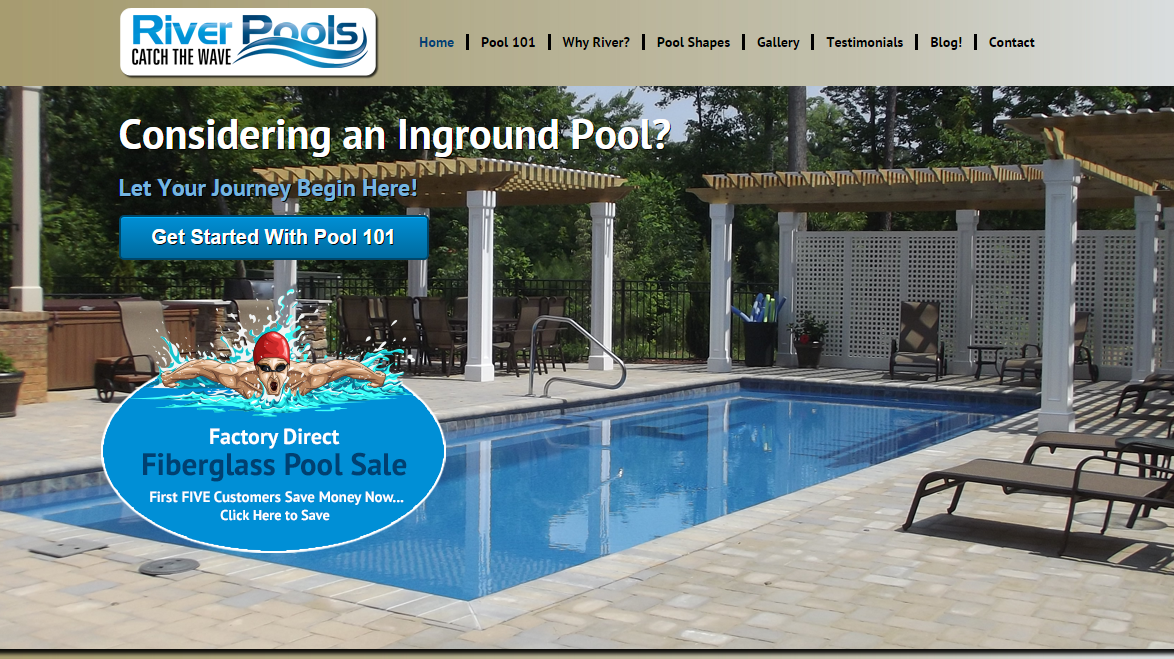
Sheridan understands how to create content that generates sales. In fact, one of his blog posts generated $2 million in sales.
5. Keep Your Blog Fresh With the Right Content
Keeping your blog fresh, with the right content, will always yield the best ROI.
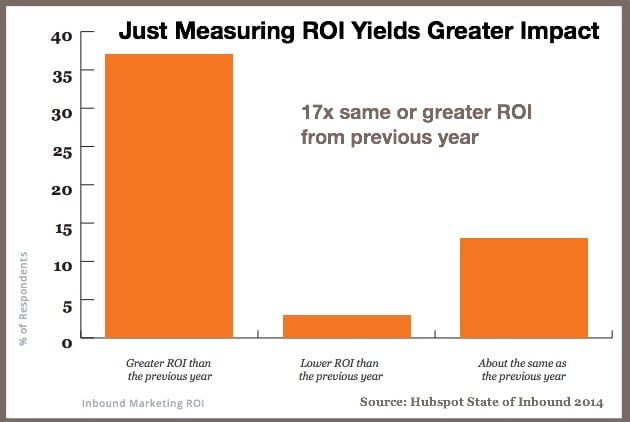
According to HubSpot, businesses that update their blogs with fresh content regularly will generate 126% more leads more than those who don’t. However, it’s important to differentiate powerful content from the right content.

Powerful content may evoke a “wow” reaction from your readers, but it may not solve their problems. In contrast, the right content will wow them, but it’ll also give them actionable tips to implement and produce results for them.
Before Google added mobile responsiveness as a ranking factor, mobile bounce rates were about 60%. But, now that sites are displaying well on smartphones, tablets and other mobile devices, the bounce rate will improve (i.e., reduce).
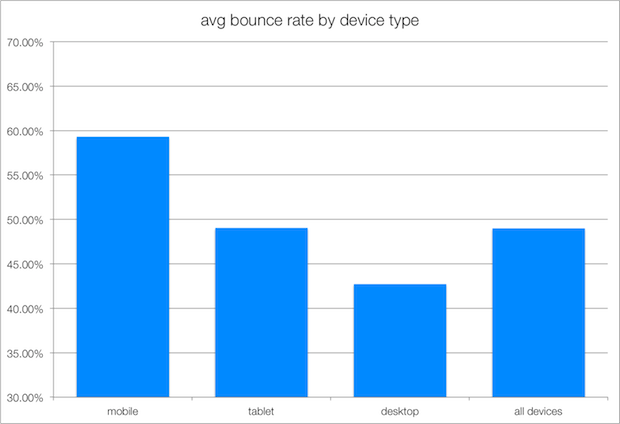
By consistently adding fresh content, you’re gradually building momentum and establishing trust. Remember that readers are very clever and can see through deceptive and manipulative tactics. But, they’ll also remember every action step that you take and the words that you use. They’ll come to trust you.
And, that means that your repeat visitors will begin to exceed new visitors, which begins to increase your conversion rate. You can generate more revenue from repeat visitors, because you’ve established a level of trust with them.

6. Target Keywords With High-Value Traffic
Keywords can make or break your content marketing campaign. If you want to improve search performance, start targeting high-value keywords, because that’s where the high-value traffic is.
According to LinchPin SEO, a perfect high-value keyword sits at the intersection of four important metrics:
- Traffic value
- Conversion value
- Persona value
- Brand value

Did you know that 97% of Google’s revenue is from advertising? The bulk of their revenue comes from targeting expensive keywords.
All keywords are not created equal. Some are going to bring you valuable traffic, while others will only keep you waiting by the side of the road for a ride that probably isn’t going to come.

Simply writing content for your blog will not adequately reduce your bounce rate or improve conversions. You’ve also got to target keywords with high-value traffic. These keywords, in turn, will send high-value customers to you.
What are these keywords? As you already know, commercial and informationalkeywords are the two major categories and every search term falls into one or the other.
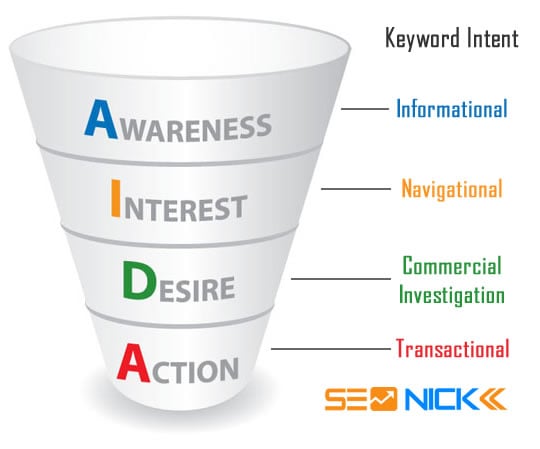
Informational keywords are used to create awareness, while commercial keywords show a strong desire for the specific product and directly result in sales.

When I say high value keywords, I’m talking about those keywords that support in-depth and powerful content that your users will spend more time reading iphone klingelton kostenlos.
Remember that the more time they spend on your site, the more likely they are to want to read more and the more they come to trust you. That’ll slice your bounce rate by half or even more.
Some keywords are for “just visiting” traffic. Yes, they may be searching for those keywords, but they’re not really that committed to reading every piece of content that gets sent their way.

However, other keywords are highly targeted to the customer’s present needs. If the content writer creates persuasive content, targeting that keyword, it can captivate the audience so much so that they’ll gladly read it and share it with others.
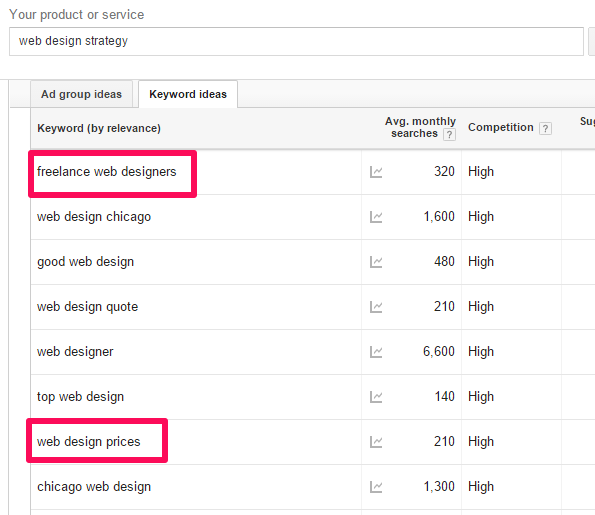
High-value keywords are powerful. They not only improve your traffic, engagement and conversion rate – but they also enhance your authority and online reputation.
Having seen the potential of specific keywords in sending high-value traffic to your site, how do you find the right keywords?
It’s a lot easier than you might think. Simply follow these steps:
Step #1: Go to Google AdWords Keyword Planner. Make sure you’re logged in with your Gmail account. Plug your main keyword + a qualifier into the search box and click “Get ideas.” We’ll use website design strategy as an example.
The high-value keywords from the list are:
- freelance web designers
- web design prices
What is the intent behind these keywords? Take freelance web designers: the searcher is mainly looking for a list of freelance web designers. If you’re a web designer and want to attract this kind of customer, you’ve got to understand the buyer cycle.
People searching for these keywords aren’t ready to buy yet. They’re just trying to figure out which is the best service or deal, before they make a final decision.
Another reason the keyword is high-value is because you can create a series of articles with your content and lead the customer from one page to the next, thus reducing your bounce rate. Each page could, for example, showcase one company or professional, their rates, work schedule and terms.
Take this example, from Made for Mums. They present 20 meals to eat during pregnancy in a slide presentation – each slide is a separate web page.
As readers move through the pages, they’re increasing the value of that page and reducing bounce rate, all without realizing that they’re visiting 20 separate pages.

Step #2: Dig for high-value brand keywords that the searcher uses to discover the various product models for a particular brand.

This may work best in ecommerce SEO. But, if you’re smart, you can also use brand product keywords in your industry.
Still using the keyword planner, type in your brand keyword, to find its variations (e.g., nike training shoes).

You could turn each of these high-value keywords into headlines that will attract plenty of organic clicks and social shares.
The keywords are:
- cheap nike training shoes
- nike baseball training shoes
- new nike training shoes
Fresh, clickable and benefit-driven headlines:
- 20 Cheap Nike Training Shoes Under $70
- The Top 9 Nike Baseball Training Shoes You Should See
- New Nike Training Shoes: Where to Buy Stylish Training Shoes
In summary, keep the following tips in mind, when you’re looking for high-value traffic:
- Target high-value keywords that will lead the customer from Point A to Point B.
- Target keywords where the user intent is not limited by the keyword itself.
- Write the best and most in-depth content that you possibly can – don’t shy away from making it emotionally relevant to your customers herunterladen.
- Don’t stuff keywords – it could get you penalized. Instead, target LSI keywords to drive extra search visitors.
7. Attract the Right Visitors
In her book Content Strategy for the Web, Christina Halvorson wrote that “better content means better business for you.” This is why 58% of marketers plan to increase their paid distribution budgets – they’ve seen the impact of the right content on the target audience.

If your content strategy isn’t yielding the right visitors and increased sales for you, it’s time to improve. There’s nothing as powerful as publishing custom content that’s “right” for your market, using a content strategy that takes each stage of the buying cycle into account.
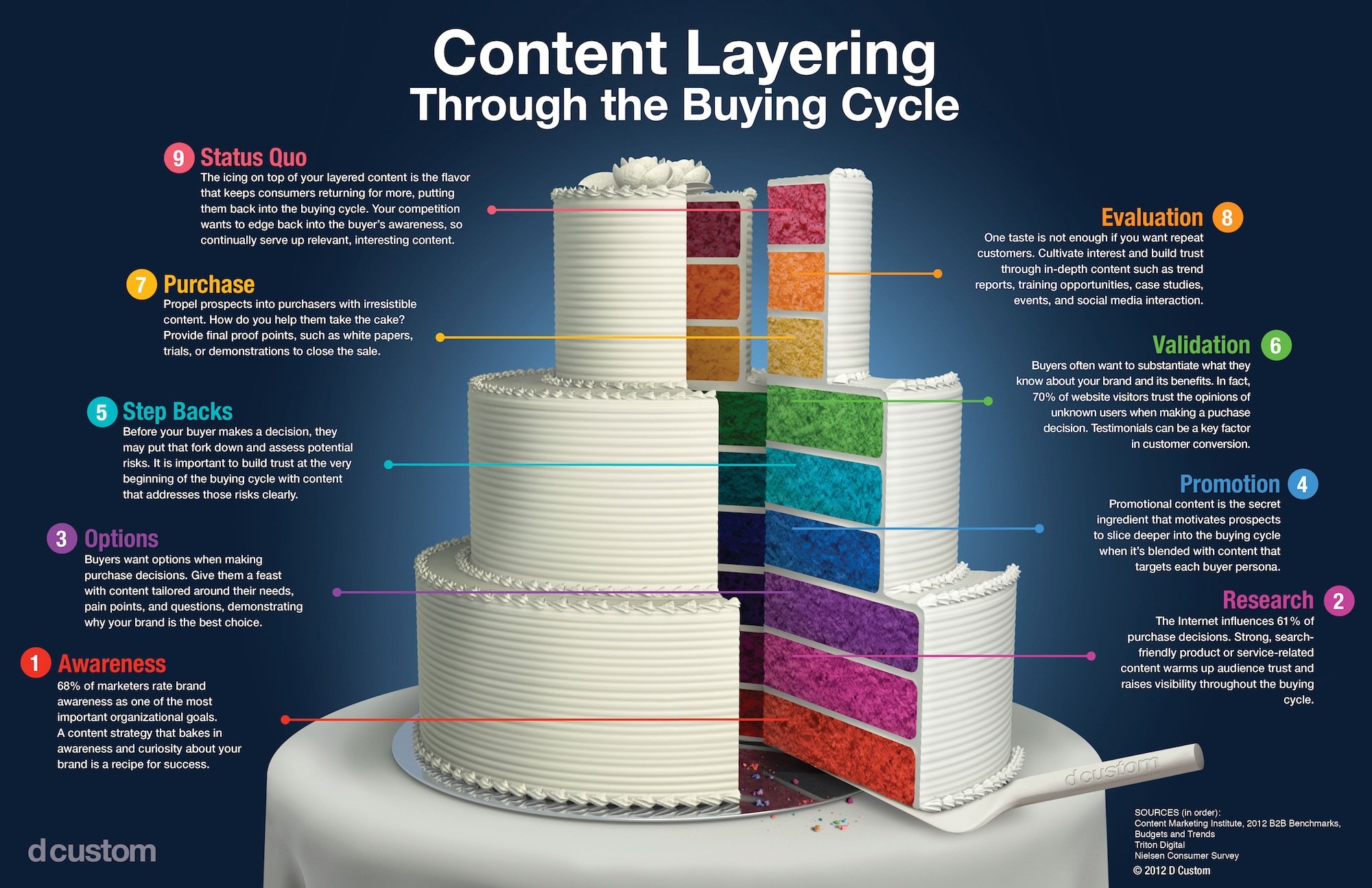
Brian Dean boosted his conversions by 785% in one day, with A/B split testing, because he recognized that the traditional ebook giveaway is no longer effective for building a massive list. He created the “content upgrade” strategy, which has now become a marketing standard.
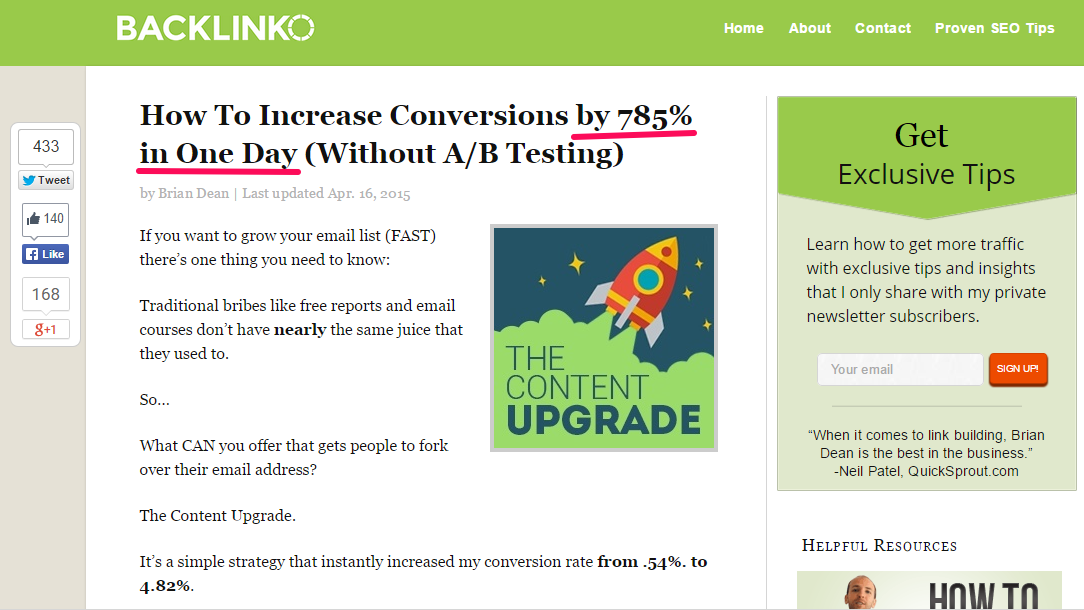
According to HubSpot’s 2012 State of Inbound Marketing Report, 90% of content marketers say custom content has a positive impact on audience attitudes and strengthens relationships with customers, by delivering awesome service.

The mistake that a lot of content marketers make is attributing a high bounce rate to a lack of quality content. But, the term “quality” is relative. Your definition of “quality” may not be the same as mine.
For example, in the internet marketing world, lengthy articles (usually 2000+ words) are considered high quality, because they tend to address every question or concern of the target audience.

On the other hand, this is not true in non-internet-related industries, like health, entertainment and finance. In these industries, shorter, informative articles tend to perform better on the social media platforms.

No matter what industry you’re in, you have to continually reach out to your target audience, via the right channel. For example, LeadPages launched LeadDigits and their users started to implement it on both desktop and mobile targeting. Those users are seeing an average conversion rate of 91%.

LeadDigits is converting very well, because it smartly targeted the right audience.
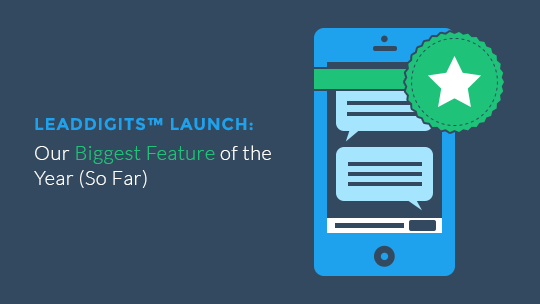
This is a lesson for you, when building a campaign or creating content: Always target the right visitors. If you run a Facebook Ads campaign, drill down into your campaign and get to the right people.
The value of the right audience can’t be overemphasized. In an interview with Forbes, Robert Kiyosaki said that the key to his success in building a multimillion dollar brand around financial literacy is “simplicity.”

This is truly striking, because I’ve often advocated the usefulness of the KISS (keep it simple stupid) concept.
It’s the same idea behind KISSmetrics, a tool that helps you track, analyze and monitor your digital marketing performance, on both mobile and desktop.

It’s a chain reaction. When you create the right content and use the right channels to distribute it, you’ll ultimately reach the right audience that will be interested in your offer herunterladen.
This is the easiest way to make marketing work for you. For example, if you sell information products (such as ebooks or software) and services, you’ll double or triple your sales conversion rate just by attracting the right prospects.
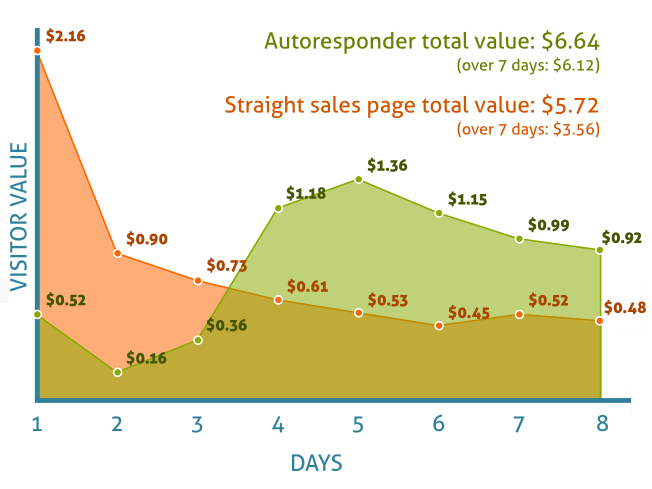
Further, research data from HubSpot shows us that 50% of consumer time on the web is spent engaging with custom content that’s tailored to them.
8. Write Attractive Meta Descriptions for Search Users
A lot of companies don’t optimize their meta descriptions for search users. As a result, their click-through rate continues to decline.

Maybe they didn’t think that it was that important – but it is. When users type a keyword into Google search, any word that matches the search term is bolded, to differentiate it from the rest and to tell the searcher to consider that result.
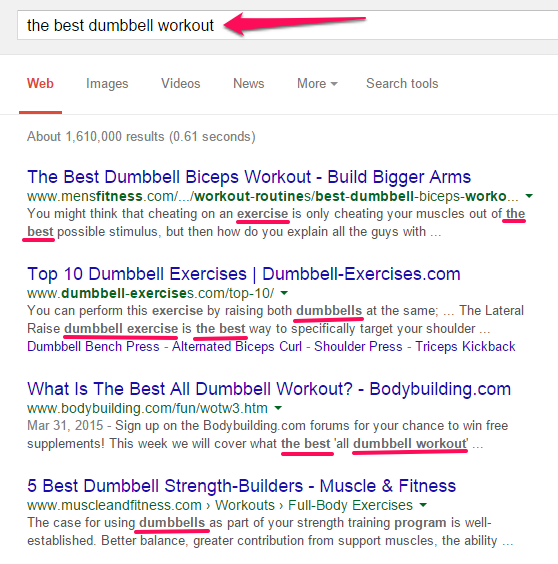
Meta descriptions are HTML attributes that describe what a particular web page is about. Search engines use meta descriptions to display a snippet of your web page, so that users can determine whether a particular search result is right for them, just by reading the description.

The optimal length for a meta description is 155 characters. If a web page description is longer, the remaining characters will not show in the search results pages. Instead, you’ll see an ellipsis (…) at the end.

Before you can successfully write an attractive meta description, you’ve got to understand the anatomy of a search result and where the meta tag fits in.

One of the tactics that I employed to grow Gawker Media’s traffic by 5,000,000 visitors was to create a unique meta description for each page, instead of allowing Google to automatically pull the site’s slogan or initial copy.
SEO Boy increased search rankings for several profitable keywords by 43%, in part by writing a relevant meta description for each web page.
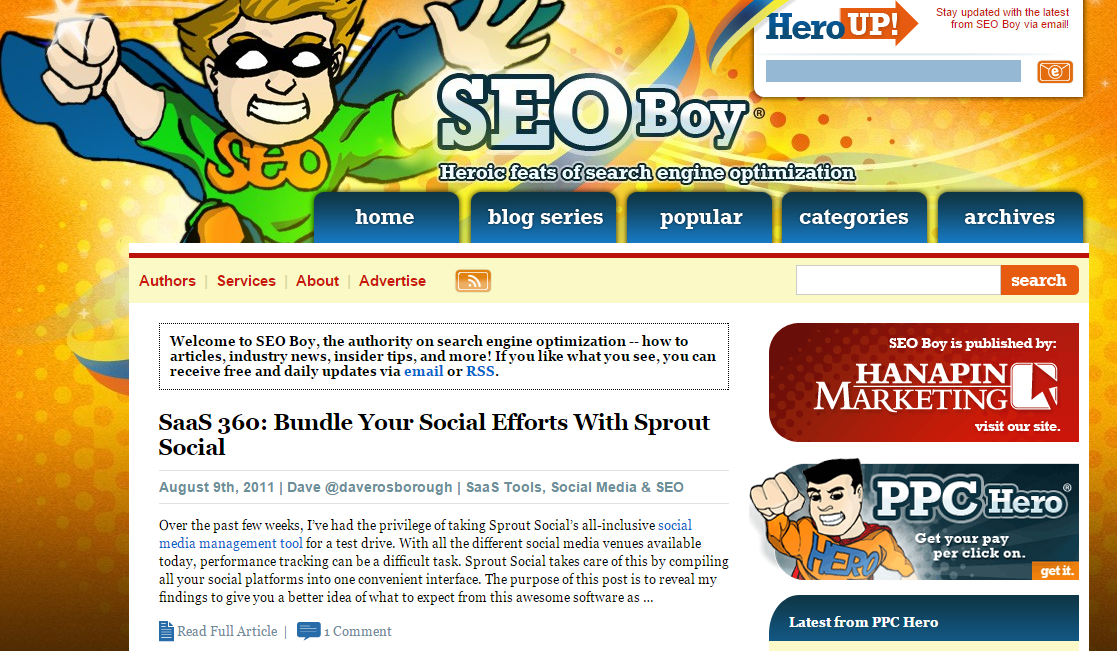
So, how do you write an attractive meta description?
If you’ve got the All In One SEO pack installed on your WordPress blog, this is easy to do. For every post that you publish (each of which is a separate web page on your site), you can provide a unique meta description. Use these tips:
i). Include the target keyword: Since a meta description is basically targeted at search users, make sure that the keyword they’re searching for is present in your description. However, this doesn’t mean that you should go stuffing keywords into descriptions. On the contrary, you should absolutely continue to write naturally.
For example, let’s say that your main keyword is best plumber in NY. Here’s how to include it in your description naturally:
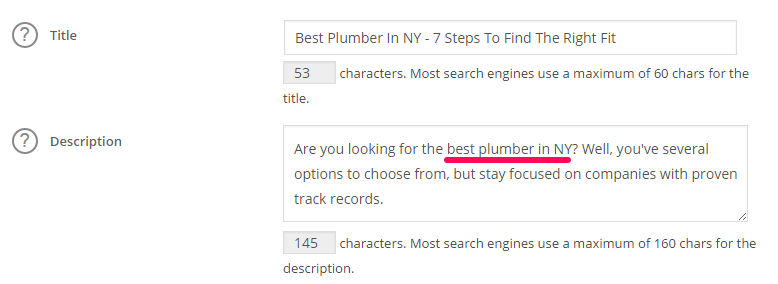
You can see that I mentioned the keyword just once in the description – not more. Also, notice how the keyword flows into the rest of the copy, so it doesn’t appear manipulative.

ii) jdownloader 2 videos herunterladen. Use a call-to-action: Search users – all users, really – need you to tell them what to do next.
Still using the above keyword (best plumber in NY) as our example, here’s how to use it as a call-to-action in your meta description:

Does using a call-to-action in the meta description work? Absolutely! Roel Manarang increased a client’s search traffic by 69%, through meta tag optimization. Just by writing a clear and actionable meta description, his client also got a 412.50% increase in conversions.

9. Create Multiple Landing Pages for High-Volume Keywords
As mentioned at the beginning of this article, the more landing pages you have, the better. You’ll create a richer experience for your users.
Creating more landing pages also increases your search click-through rate. In that respect, it’s a numbers game.
One of the metrics that’s analyzed by Google Analytics is the exit page. If you look at your dashboard, you’ll probably notice that most people are exiting your site from the homepage. The rate at which users exit your site homepage often correlates to a high bounce rate.

To solve this problem, create more landing pages, based on the high-value keywords that people are searching for in your niche. I showed you earlier how to find those valuable keywords that would increase engagement with your blog.
Once you have more landing pages, first make sure that they’re easy to navigate, then link to all of them from your homepage. You might even link to the separate landing pages on your navigation menu.
Some companies who have increased their number of landing pages from 10 to 15 have seen a 55% increase in leads.

And, the more optimized landing pages that you have, the lower your bounce rate will be. This will greatly improve your conversions, as well.
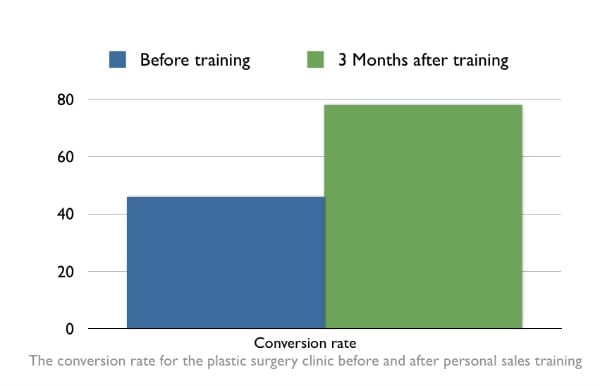
So, why are so many businesses not creating more landing pages? According to MarketingSherpa’s Landing Pages Handbook (2nd edition), it’s because they don’t know how to go about it.
Fortunately, creating a high-converting landing page is now easier than ever. You could use pre-made templates from Unbounce, Instapage or Onepagelove.
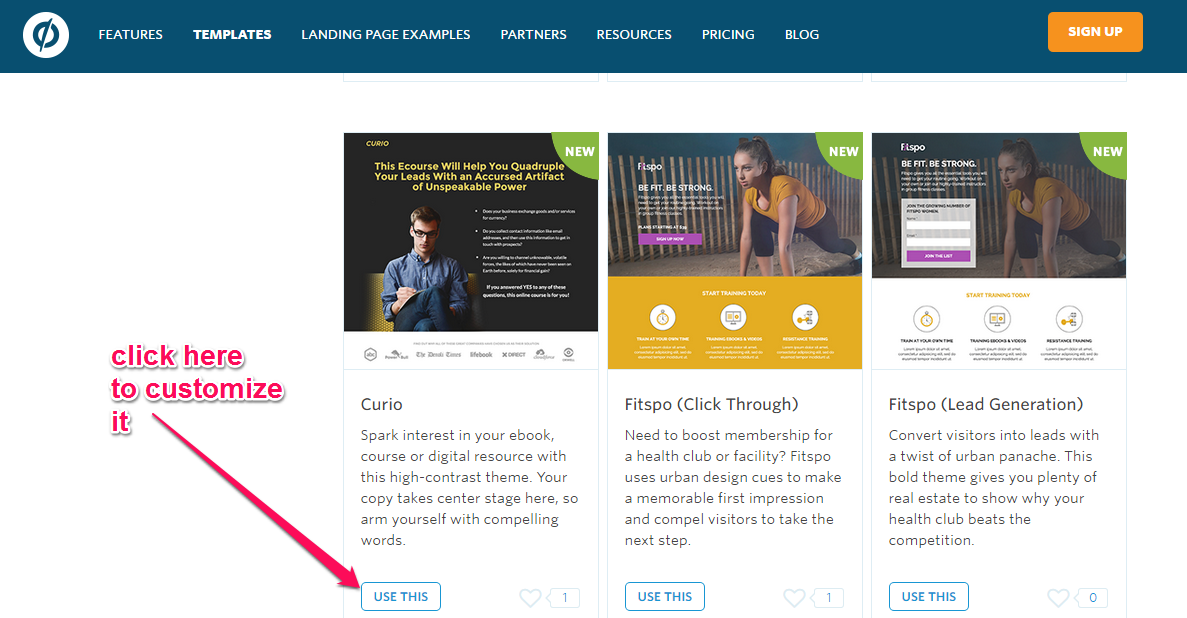
10. Speed Up Your Page Load Time
How important is site speed to users? Well, consumers expect a web page to lead in 2 seconds or less. After 3 seconds, consumers will no longer wait for your site to load – they’ll just move on to your competitor’s site.
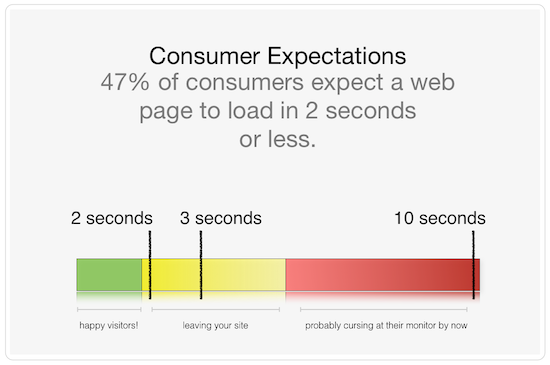
The slower your landing pages load, the higher your bounce rate will be. And, Google is also concerned about site speed – you can slip in rankings, if your site is consistently slow to load.
The bottom line is that a slow site can destroy your business and discourage potential customers from buying from you. These consumer behavior statistics give you a clearer picture:
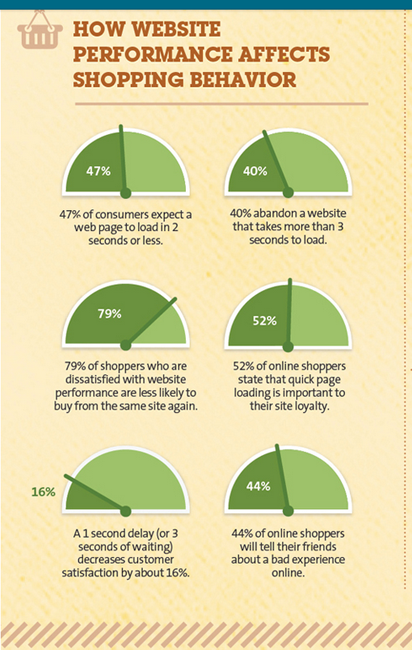
If that’s not enough to convince you, another recent statistic from Smart Insights suggests that faster loading pages usually see a higher conversion rate.

So, what’s your current site speed sounds herunterladen kostenlos? Find out by using the Pingdom Speed test tool. On the homepage, type in your site URL (e.g., quicksprout.com). Click the “test now” button.
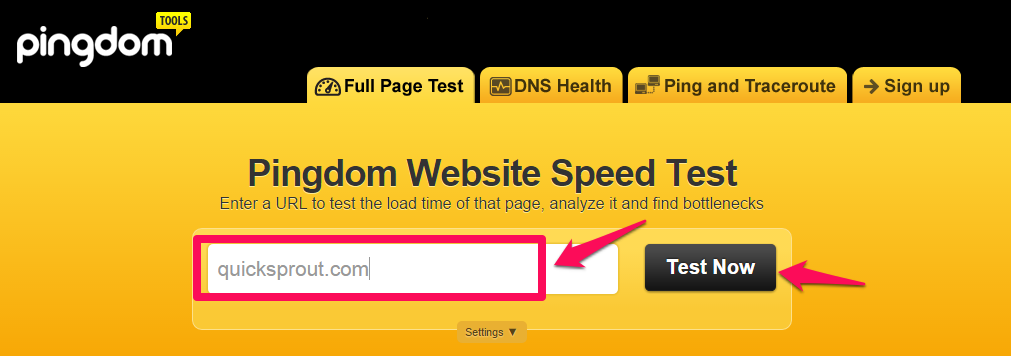
Next, analyze your speed.

As you can see, it took Quicksprout 3.33 seconds to load. Yours may be higher or lower, but since the ideal load time is 2 seconds or less, you need to optimize your site to increase its speed.
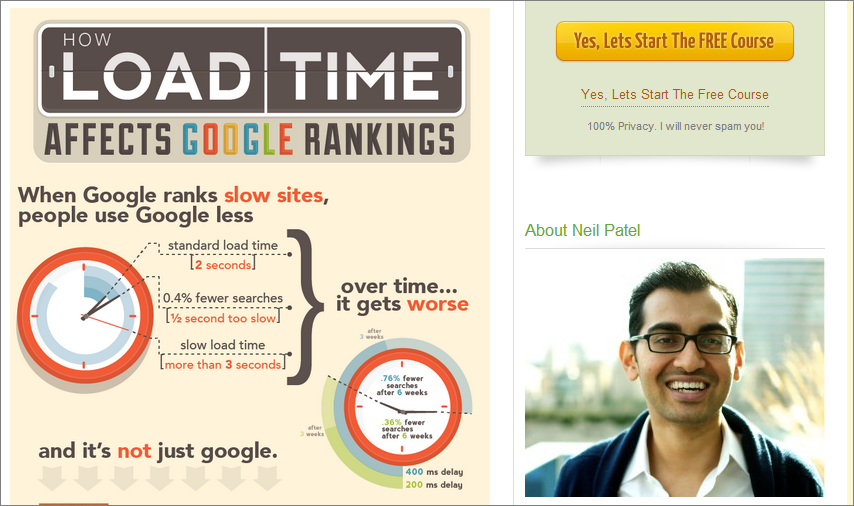
Ian Lurie was right, when he said that slow site speed is hurting everyone’s revenue. In essence, he’s saying that when you decrease load time, you’ll make more money.
So, how do you increase site speed and lower your bounce rate?

Foodmom improved its site speed to 1.17 seconds.
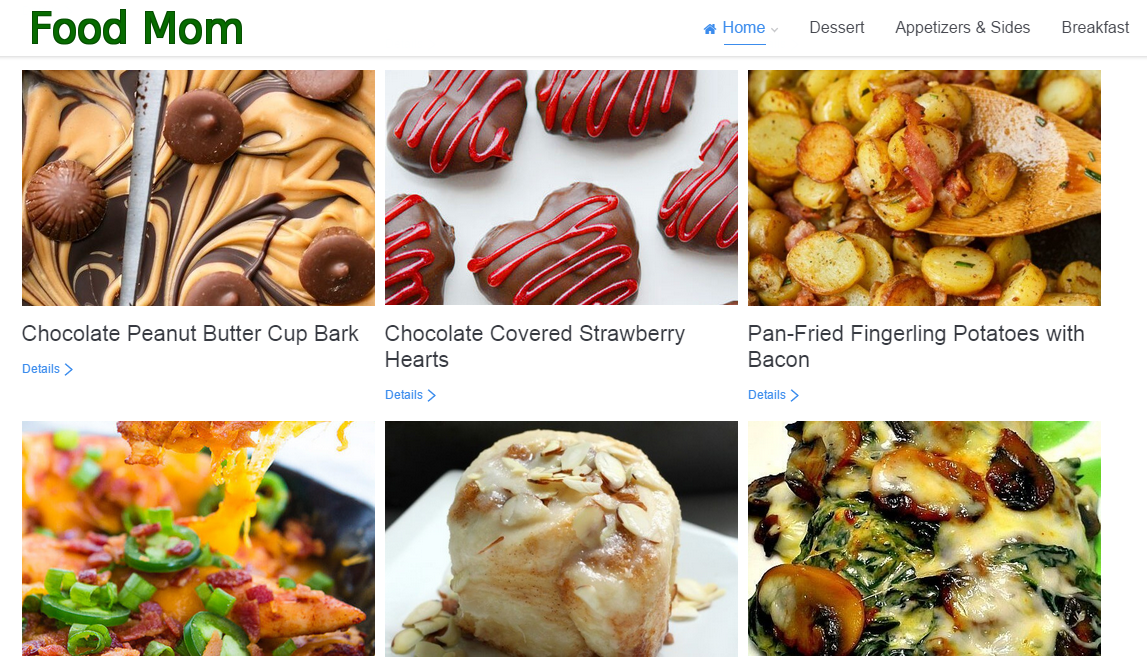
Some of the strategies Foodmom used to increase site speed include:
- Removing query strings from static pages to improve performance
- Optimizing images with WordPress plugins
- Tweaking .htaccess file
Roman Randall also improved his website speed by 90.03%, with both minor and major changes:

See also: How to Make Your Site Insanely Fast
11. Set External Links to Open in New Windows
Designing with the user in mind is a crucial part of any successful web design strategy. According to UXMovement, “when you open external links in the same tab, you create back button fatigue for users.”

What this means is that every time a user clicks a link to an external page, they have to click the back button to come back to your site (assuming they decide to visit again – they may get distracted by the new site). This will decrease your page views.
And, if they visited four different external links from your tab, they’ll click the back button four times. This is time-consuming and annoying. It also increases both exit and bounce rate.

If you use WordPress, you can download and install the WP external links plugin. It’ll automatically set all of your external links to open in a new tab or window.
12. Make Your Site Mobile-Friendly
Is your site responsive? When prospects visit your site on their iPhone, iPad, tablets and other mobile devices, will it display perfectly?
It’s time to take your brand to mobile, because your customers have their mobile devices with them everywhere.

We’re living in the mobile age. Almost 95% of your customers are on mobile, so your site must be optimized for them.
If you’re not convinced yet, here are a few quick facts:

AlphaRooms reduced their bounce rate for mobile visitors to 35%, doubled their conversions and improved the overall performance of their site. You can do the same thing, by giving your site the mobile touch. Remember, Google and your users are both desperately asking for a mobile-friendly experience.

Remember that Google follows users. The best way that Google gets accurate information is by monitoring the activities of users on your site, from desktop and mobile.
In fact, mobile friendliness is now a ranking factor. This means that if your site is not mobile friendly, no matter how useful your content may be, it won’t rank well in Google results pages.
First and foremost, test your site, by following these steps:
Step #1: Go to Google’s mobile friendly test tool google docs präsentation herunterladen. Plug in your site URL (e.g., qualaroo.com). Click the “ANALYZE” button:

Wait for the page to process:
Step #2: Check your result. If your site is mobile friendly, you’ll see a page like this:

Otherwise, you’ll see a result page similar to this:

Many businesses didn’t previously have a responsive (i.e., mobile-friendly) site. Consequently, after Google adjusted for responsiveness in its algorithm, these sites saw a drop in search rankings and traffic. The smart ones optimized their pages.
Less than 14 days after launching a mobile-responsive site, NAS Cosmetics increased its smartphone checkout conversion rate by 54% (24% for tablets). They also cut their bounce rate in half.

If you’re a WordPress user, it’s very easy to make your site responsive. All you’ve got to do is install the JetPack plugin and activate the mobile theme. You can also use the WPTouch plugin.
If you’re not using WordPress and you’re not a technical person, you may need to get a professional to help you out.
See also: 3 Steps to Increase Your Search Traffic With Google’s Mobile-Friendly Update
13. Show Credibility
The word “credibility” is the ability to inspire belief or trust in other people. Just like reputation, credibility isn’t what you say about yourself, but how other people perceive you. Credibility matters – don’t ignore it.

Whatever you do online, recognize that it can’t all be about making a quick buck at the expense of your reputation and principles. Instead, use every opportunity to help others.
I can’t give you an explicit checklist of things to do, to increase your personal credibility. No one can, really. But, over the years, being transparent and giving away plenty of valuable resources for free have both been instrumental in my success.
Fortunately, the more credible you are, the more money you’re likely to make. A research study by Consumer Web Watch found that 4 out of 5 users say that being able to trust the information they read on a website is important.
In a nutshell, you don’t buy from people you don’t trust, do you?

A credible site does the following:
- Makes people trust and believe what it says (the content)
- Gives people reassurance that their personal information is safe
- Instills confidence in them, when spending their hard-earned money
- Eliminates the buying dilemma (e.g. should I buy or not)
Peep Laja, founder of ConversionXL, shares some of the ways that you can make your site highly credible in the minds of your users:

Online consumers feel excited, when buying from brands like Apple, Amazon and Zappos, because, in their minds, these brands are credible.
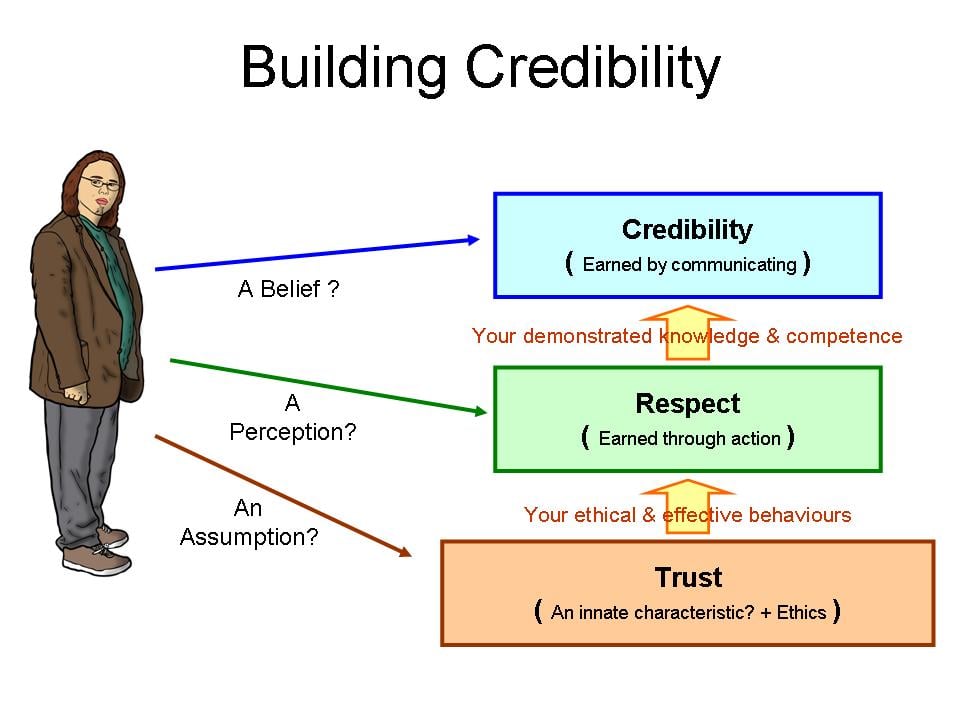
Conclusion
In this article, I’ve shown you several ways to reduce your bounce rate and boost your conversion rate. But, without high-quality content, even if you succeed at cutting your bounce rate in half, your risk of increasing it again is high.
To avoid that, map out a content strategy and an editorial calendar. You’re reading this blog today, because I’ve made up my mind to put you first, by creating in-depth content that you’ll find helpful.
I’ll be surprised if my bounce rate gets higher than 50%, because most readers spend a notable amount of time on my site. That’s what every site owner has to work towards – gradually increasing the time that users spend reading their content.
In all, keep at it and stay consistent tolino ebook downloaden. I know that some of the strategies here could produce fairly quick results, but don’t expect that. Keep growing your site audience. As you satisfy your users, they’ll gladly tell others about you – thus improving your search traffic, inbound links and lead generation.
Did you find any of these 13 ways for reducing your bounce rate helpful? Share your experience below.




